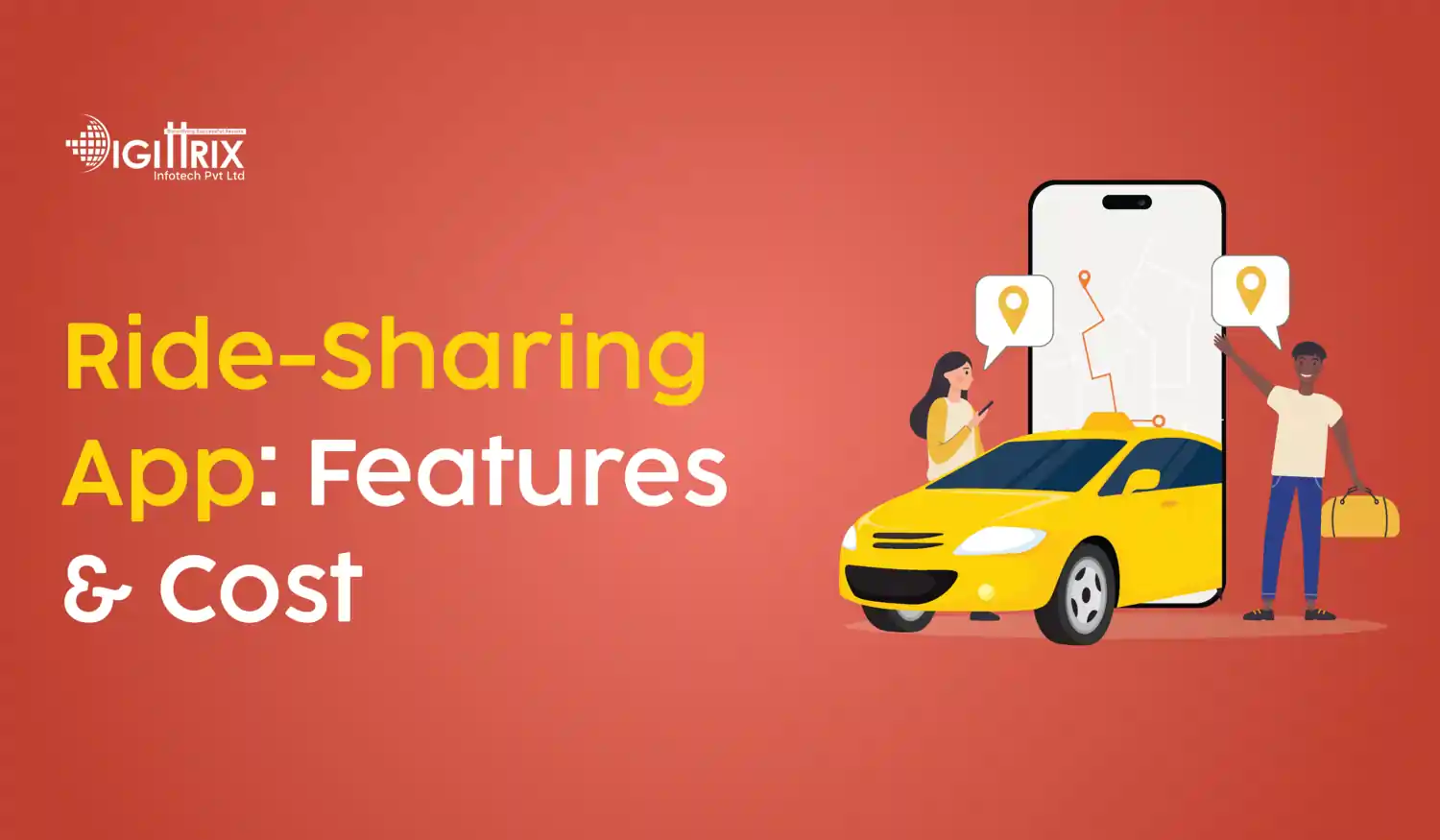A ride-sharing app requires a strategic approach to manufacture, which focuses on the main features such as real-time tracking, payment integration and user management. With the rise of Uber and Lift, the market is competitive, making cost structures required to include innovative features to understand and stand out.
Highlights
With Over 14 years of Experience in the IT Field, Helping Companies Optimise there Products for more Conversions

In today’s transportation world ride-sharing apps have become essential. Whether it’s a taxi booking app, a carpooling app, or a ride-sharing service like Uber or Lyft, these apps offer an efficient way to connect passengers with drivers. If you are thinking about Ride Sharing App Development, this article will provide a comprehensive guide on the features required, steps involved, and cost estimation for ride-sharing app development.
Ride-sharing apps have changed how people get around giving them fast and easy transport options. Users can book rides on their phones in just a few clicks. Whether you want to make a Quick Ride Clone app or come up with a brand new idea, creating a ride-sharing app has many perks such as:
With these advantages in mind, let's dive into the key steps involved in creating a ride-sharing app and the features that should be included.
Looking to enhance customer support? Check Digittrix's AI chat solutions for seamless automation!
Building a ride-sharing app requires a well-defined development process. Below are the essential steps to guide you in creating a mobile ride-sharing app.
Before you kick off app development, do some market research. Take a look at your rivals like Uber, Lyft, and other local ride-sharing apps. Figure out what features they offer and spot any gaps in the market. This will guide you to decide if you want to build an app like Bla Bla or come up with something new.
The next step is to outline the key features your application should have. These features define how your application works and interacts with users. Some basic functions include:
Choose if you want your ride-sharing app to run on iOS, Android, or both. Your choice will affect how much it costs to develop and how long it takes. Mobile app development for both platforms can cost more, but it helps you reach more people. You might also think about building a web version, but most users find mobile apps more handy.
Your app needs a UI that's easy to understand and use. Keep the design simple, with navigation that makes sense and clear instructions. Users should be able to figure out how to use the app without getting confused. The UI should include the following components:
After designing the UI, the next step is to develop the app and integrate the features you have outlined. The key components include:
Integration of third-party services for payment gateways and GPS tracking is crucial at this stage.
Once you've built your app, test your app on different devices and operating systems. This testing helps you spot bugs, problems, or hiccups that might make the app less enjoyable for users. It's also crucial to check how well the app works when lots of people are using it at once.
When your app is tested and good to go, it's time to put it out there on the app stores. This means sending your app to the Google Play Store and Apple App Store for them to check it out. You need to stick to their rules to make sure your app gets the green light.
Once your app is live, keep monitoring its performance and gather user feedback. Make sure to update the app often with fixes for any bugs, cool new stuff, and tweaks to make it run better. This will help keep people interested in using your app.
The success of your ride-sharing app depends on the features you offer. Below are the must-have features for your app:
Depending on your business model, you can add some advanced features to make your app stand out from the competition. These features can include:
The cost of developing a ride-sharing app depends on several factors, such as the complexity of the app, the number of features, the platforms, and the region where the development team is located. Here’s a general breakdown of the costs involved:
Creating a ride-sharing app like Bla Bla, Uber, or a Quick Ride Clone has its challenges but also brings rewards. To make sure your app launches, you need to plan each step with care, from deciding on features to figuring out costs and building the app. Your app can make commuting better for both passengers and drivers if you include the right features and make it easy to use. If you're looking for taxi booking app development, a well-made, working, and affordable app can help your business find its place in the competitive world of ride-sharing. So, if you're ready to jump into making ride-sharing apps, follow these steps to create an app that's helpful, dependable, and easy to use.
In today’s fast-paced world, ride-sharing apps have become essential for convenient and cost-effective transportation. A well-developed platform like Uber or BlaBlaCar helps connect drivers and passengers, manage ride bookings, and facilitate secure payments, making travel more efficient.
At Digittrix, we specialize in ride-sharing app development, offering both ready-made solutions for quick deployment and fully customized apps tailored to your business needs. Whether you want to build a ride-sharing app, our experienced team ensures a smooth and hassle-free development process.
Looking to launch a powerful ride-sharing or carpooling app that attracts drivers and riders? Contact our technical team today at +91 8727000867 or email us at digittrix@gmail.com.
Let’s build a feature-rich ride-sharing app that helps your business succeed in the competitive mobility industry!

Do you need help in Mobile App development?




Join over 1500+ businesses we've already helped!
A ride-sharing app is a mobile application that connects passengers with drivers for transportation services. Users can book rides in real-time or schedule them in advance.
The development time depends on the complexity of the app. A basic ride-sharing app may take around 3-6 months, while a feature-rich app can take 6-12 months.
Yes, you can build an app like Bla Bla or Uber by integrating similar features such as ride-matching, driver verification, and fare calculation. The cost and time depend on the required functionalities.
Yes, you can integrate credit/debit cards, mobile wallets, UPI, and even cash payment options to offer flexibility to users.

©2025Digittrix Infotech Private Limited , All rights reserved.